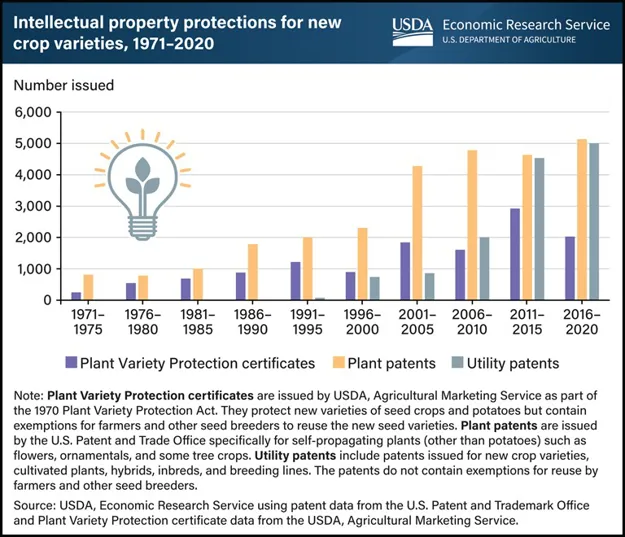Before 1970, most crop breeding was done in the public sector. Seed companies lacked incentives to invest in crop breeding because they had no legal mechanism to restrict unlicensed use of improved seed, except for hybrid seed, which could be protected through trade secrets. The 1970 Plant Variety Protection Act aimed to encourage seed companies to improve crop varieties beyond hybrid seed. That aim was cemented after several court rulings ensured the private sector could benefit from its research into new seed varieties and genetically modified traits.

In the following years, the number of intellectual property rights, such as Plant Variety Protection certificates, plant patents, and utility patents, began to rise. Genetically modified varieties of corn, soybeans, and cotton were introduced in the United States in 1996 and became the dominant seed choice among farmers within a few years. From 2016 to 2020, a total of 5,137 plant patents, 5,010 utility patents, and 2,028 Plant Variety Protection certificates were issued for new crop varieties, more than double the rate of a decade earlier. This chart appears in the USDA Economic Research Service publication Concentration and Competition in U.S. Agribusiness, and the Amber Waves article Expanded Intellectual Property Protections for Crop Seeds Increase Innovation and Market Power for Companies.
Source: usda.gov
